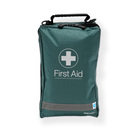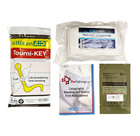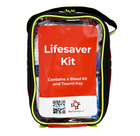Common Skeletal Injuries
Want to watch this video? Sign up for the course
or enter your email below to watch one free video.
Unlock This Video Now for FREE
This video is normally available to paying customers.
You may unlock this video for FREE. Enter your email address for instant access AND to receive ongoing updates and special discounts related to this topic.
Overview of Common Skeletal Injuries
This guide describes various skeletal injuries from head to toe, explaining their causes and implications.
Skull Injuries
Example: Skull fractures, often resulting from head injuries.
Cervical Spine Injuries
Potentially life-threatening injuries affecting the cervical vertebrae (C1 to C7).
Shoulder and Arm Injuries
- Clavicle Fractures: Common in cyclists, typically occurring from landing on the shoulder.
- Shoulder Dislocations: Often seen in contact sports like rugby, usually occurring anteriorly.
- Humerus Fractures: Injuries to the upper arm bone.
- Elbow Tendonitis: Including tennis elbow (lateral) and golfer's elbow (medial).
Wrist and Hand Injuries
- Colles' Fracture: A common fracture in the wrist, often occurring from falls.
- Scaphoid Fracture: Notable for its poor blood supply and challenging healing process.
Spine and Lower Back Injuries
Includes injuries like burst fractures in the thoracic spine and sciatica from prolapsed discs in the lumbar spine.
Pelvis and Hip Joint Injuries
- Pelvic Fractures: Serious injuries indicating an unstable pelvis.
- Osteoarthritis of the Hip: Degeneration of cartilage causing pain and limited mobility.
Leg and Knee Injuries
- Femur Fractures: Serious injuries requiring full leg immobilization.
- Knee Injuries: Including meniscus tears and O'Donoghue's triad, a common ligament injury in athletes.
Ankle Injuries
Common sprains and instabilities, often resulting from poor proprioception and weak musculature around the ankle.
Recommended Products For You
Lifesaver Kit with Tourni-Key - Black
£85.00 + VAT
First Aid Kit In Green Pouch
£9.99 + VAT
Lifesaver Kit Ultra - Green
£99.00 + VAT
First Aid Upgrade Kit
£14.00 + VAT
Lifesaver Kit with Tourni-Key - Red
£85.00 + VAT
Lifesaver Kit Ultra - Red
£99.00 + VAT
DefibSafe DS3 AED Cabinet IP66 Orange
£495.00 + VAT
Lifesaver Kit with Tourniquet - Green
£99.00 + VAT







